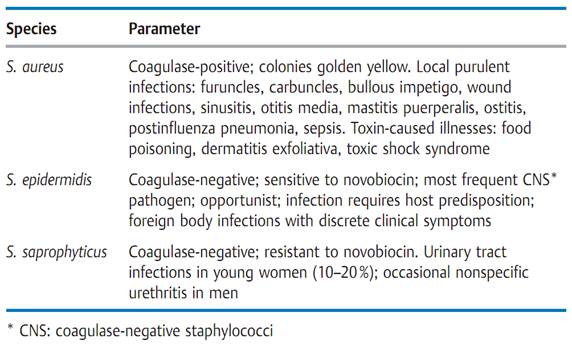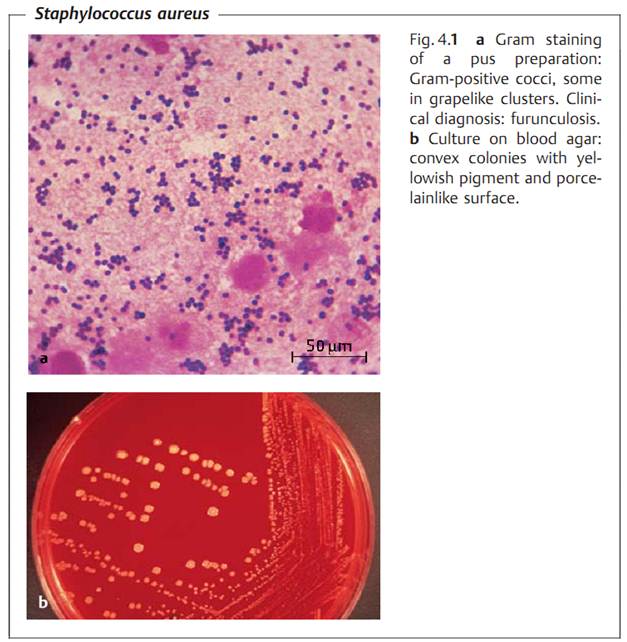

النبات

مواضيع عامة في علم النبات

الجذور - السيقان - الأوراق

النباتات الوعائية واللاوعائية

البذور (مغطاة البذور - عاريات البذور)

الطحالب

النباتات الطبية


الحيوان

مواضيع عامة في علم الحيوان

علم التشريح

التنوع الإحيائي

البايلوجيا الخلوية


الأحياء المجهرية

البكتيريا

الفطريات

الطفيليات

الفايروسات


علم الأمراض

الاورام

الامراض الوراثية

الامراض المناعية

الامراض المدارية

اضطرابات الدورة الدموية

مواضيع عامة في علم الامراض

الحشرات


التقانة الإحيائية

مواضيع عامة في التقانة الإحيائية


التقنية الحيوية المكروبية

التقنية الحيوية والميكروبات

الفعاليات الحيوية

وراثة الاحياء المجهرية

تصنيف الاحياء المجهرية

الاحياء المجهرية في الطبيعة

أيض الاجهاد

التقنية الحيوية والبيئة

التقنية الحيوية والطب

التقنية الحيوية والزراعة

التقنية الحيوية والصناعة

التقنية الحيوية والطاقة

البحار والطحالب الصغيرة

عزل البروتين

هندسة الجينات


التقنية الحياتية النانوية

مفاهيم التقنية الحيوية النانوية

التراكيب النانوية والمجاهر المستخدمة في رؤيتها

تصنيع وتخليق المواد النانوية

تطبيقات التقنية النانوية والحيوية النانوية

الرقائق والمتحسسات الحيوية

المصفوفات المجهرية وحاسوب الدنا

اللقاحات

البيئة والتلوث


علم الأجنة

اعضاء التكاثر وتشكل الاعراس

الاخصاب

التشطر

العصيبة وتشكل الجسيدات

تشكل اللواحق الجنينية

تكون المعيدة وظهور الطبقات الجنينية

مقدمة لعلم الاجنة


الأحياء الجزيئي

مواضيع عامة في الاحياء الجزيئي


علم وظائف الأعضاء


الغدد

مواضيع عامة في الغدد

الغدد الصم و هرموناتها

الجسم تحت السريري

الغدة النخامية

الغدة الكظرية

الغدة التناسلية

الغدة الدرقية والجار الدرقية

الغدة البنكرياسية

الغدة الصنوبرية

مواضيع عامة في علم وظائف الاعضاء

الخلية الحيوانية

الجهاز العصبي

أعضاء الحس

الجهاز العضلي

السوائل الجسمية

الجهاز الدوري والليمف

الجهاز التنفسي

الجهاز الهضمي

الجهاز البولي


المضادات الحيوية

مواضيع عامة في المضادات الحيوية

مضادات البكتيريا

مضادات الفطريات

مضادات الطفيليات

مضادات الفايروسات

علم الخلية

الوراثة

الأحياء العامة

المناعة

التحليلات المرضية

الكيمياء الحيوية

مواضيع متنوعة أخرى

الانزيمات
Staphylococcus
المؤلف:
Fritz H. Kayser
المصدر:
Medical Microbiology -2005
الجزء والصفحة:
8-3-2016
3112
Staphylococcus
Staphylococci are Gram-positive cocci occurring in clusters. They can be cultured on normal nutrient mediums both aerobically and anaerobically. The most important species from the viewpoint of human medicine is S. aureus. A number of extracellular enzymes and exotoxins such as coagulase, alphatoxin, leukocidin, exfoliatins, enterotoxins, and toxic shock toxin are responsible for the clinical symptoms of infections by this pathogen, which are observed in the three types invasive infections, pure toxicoses, and mixed forms. The antibiotics of choice for therapy of these infections are penicillinase-resistant penicillins. Laboratory diagnosis involves identification of the pathogen by means of microscopy and culturing. S. aureus is a frequent pathogen in nosocomial infections and limited outbreaks in hospitals. Hand washing by medical staff is the most important prophylactic measure in hospitals.
Coagulase-negative staphylococci are classic opportunists. S. epidermidis and other species are frequent agents in foreign body infections due to their ability to form biofilms on the surfaces of inert objects. S. saprophyticus is responsible for between 10 and 20% of acute urinary tract infections in young women.
Staphylococci are small spherical cells (1 µm) found in grapelike clusters. Staphylococci are nonmotile, catalase-producing bacteria. The genus Staphylococcus includes over 30 species and subspecies. Table 4.1 briefly summarizes the characteristics of those most important in the medical context. S. aureus (and E. coli) are among the most frequent causal organisms in human bacterial infections.

Staphylococcus aureus
Morphology and culturing. Fig. 4.1a shows the appearance of Gram-stained S. aureus. This is a facultative anaerobe that is readily cultured on normal nutrient mediums at 37 °C. Colonies as in Fig. 4.1b develop after 24 hours of incubation. Hemolytic zones are frequently observed around the colonies.
Fine structure. The cell wall consists of a thick layer of murein. Linear teichoic acids and polysaccharides are covalently coupled to the murein polysaccharide . The lipoteichoic acids permeating the entire murein layer are anchored in the cell membrane. Teichoic and lipoteichoic acids can trigger activation of complement by the alternative pathway and stimulate macrophages to secrete cytokines. Cell wall-associated proteins are bound to the peptide components of the murein. Clumping factor, fibronec- tin-binding protein, and collagen-binding protein bind specifically to fibrinogen, fibronectin, and collagen, respectively, and are instrumental in adhesion to tissues and foreign bodies covered with the appropriate matrix protein. Protein A binds to the Fc portion of immunoglobulins (IgG). It is assumed that “false” binding of immunoglobulins by protein A prevents “correct” binding of opsonizing antibodies, thus hindering phagocytosis.

Extracellular toxins and enzymes. S. aureus secretes numerous enzymes and toxins that determine, together with the fine structures described above, the pathogenesis of the attendant infections. The most important are:
- Plasma coagulase is an enzyme that functions like thrombin to convert fibrinogen into fibrin. Tissue microcolonies surrounded by fibrin walls are difficult to phagocytose.
- a-toxin can have lethal CNS effects, damages membranes (resulting in, among other things, hemolysis), and is responsible for a form of dermone- crosis.
- Leukocidin damages microphages and macrophages by degranulation.
- Exfoliatins are responsible for a form of epidermolysis.
- Food poisoning symptoms can be caused by eight serologically differentiated enterotoxins (A-E, H, G, and I). These proteins (MW: 35 kDa) are not inactivated by heating to 100 °C for 15-30 minutes. Staphylococcus enterotoxins are superantigens .
- Toxic shock syndrome toxin-1 (TSST-1) is produced by about 1% of Staphylococcus strains. TSST-1 is a superantigen that induces clonal expansion of many T lymphocyte types (about 10%), leading to massive production of cytokines, which then give rise to the clinical symptoms of toxic shock.
Pathogenesis and clinical pictures. The pathogenesis and symptoms of S. aureus infections take one of three distinct courses:
- Invasive infections. In this type of infection, the pathogens tend to remain in situ after penetrating through the derma or mucosa and to cause local infections characterized by purulence. Examples include furuncles (Fig. 4.2), carbuncles, wound infections, sinusitis, otitis media, and mastitis puerperalis.
Other kinds of invasive infection include postoperative or posttraumatic otitis/osteomyelitis, endocarditis following heart surgery (especially valve replacement), postinfluenza pneumonia, and sepsis in immunocompromised patients. S. aureus and E. coli are responsible for approximately equal shares of nearly half of all cases of inpatient sepsis.
Inert foreign bodies can be colonized by S. aureus. Colonization begins with specific binding of the staphylococci, by means of cell wall-associated adhesion proteins, to fibrinogen or fibronectin covering the foreign body, resulting in a biofilm that may function as a focus of infection.

- Toxicoses. Food poisoning results from ingestion of food contaminated with enterotoxins. The onset a few hours after ingestion takes the form of nausea, vomiting, and massive diarrhea.
- Mixed forms. Dermatitis exfoliativa (staphylococcal scalded skin syndrome, Ritter disease), pemphigus neonatorum, and bullous impetigo are caused by exfoliatin-producing strains that infect the skin surface. Toxic shock syndrome (TSS) is caused by strains that produce TSST-1. These strains can cause invasive infections, but may also only colonize mucosa. The main symptoms are hypotension, fever, and a scarlatiniform rash.
Diagnosis. This requires microscopic and culture-based pathogen identification. Differentiating S. aureus from the coagulase-negative species is achieved by detection of the plasma coagulase and/or the clumping factor. The enterotoxins and TSST-1 can be detected by means of immunological and molecular biological methods (special laboratories).

Therapy. Aside from surgical measures, therapy is based on administration of antibiotics. The agents of choice for severe infections are penicillinase- resistant penicillins, since 70-80% of all strains produce penicillinase. These penicillins are, however, ineffective against methicillin-resistant strains, and this resistance applies to all betalactams.
Epidemiology and prevention. S. aureus is a frequent colonizer of skin and mucosa. High carrier rates (up to 80%) are the rules among hospital patients and staff. The principle localization of colonization in these persons is the anterior nasal mucosa area, from where the bacteria can spread to hands or with dust into the air and be transmitted to susceptible persons.
S. aureus is frequently the causal pathogen in nosocomial infections (see p. 343f.). Certain strains are known to cause hospital epidemics. Identification of the epidemic strain requires differentiation of relevant infection isolates from other ubiquitous strains. Lysotyping (see p. 186) can be used for this purpose, although use of molecular methods to identify genomic DNA “fingerprints” is now becoming more common.
The most important preventive measure in hospitals is washing the hands thoroughly before medical and nursing procedures. Intranasal application of antibiotics (mupirocin) is a method of reducing bacterial counts in carriers.
Cagulase-Negative Staphylococci (CNS)
CNS are an element in the normal flora of human skin and mucosa. They are classic opportunists that only cause infections given a certain host disposition.
- S. epidermidis. This is the pathogen most frequently encountered in CNS infections (70-80% of cases). CNS cause mainly foreign body infections. Examples of the foreign bodies involved are intravasal catheters, continuous ambulant peritoneal dialysis (CAPD) catheters, endoprostheses, metal plates and screws in osteosynthesis, cardiac pacemakers, artificial heart valves, and shunt valves. These infections frequently develop when foreign bodies in the microorganism are covered by matrix proteins (e.g., fibrinogen, fibronectin) to which the staphylococci can bind using specific cell wall proteins. They then proliferate on the surface and produce a polymeric substance—the basis of the developing biofilm. The staphylococci within the biofilm are protected from antibiotics and the immune system to a great extent. Such biofilms can become infection foci from which the CNS enter the bloodstream and cause sepsislike illnesses. Removal of the foreign body is often necessary.
- S. saprophyticus is responsible for 10-20% of acute urinary tract infections, in particular dysuria in young women, and for a small proportion of cases of nonspecific urethritis in sexually active men.
Antibiotic treatment of CNS infections is often problematic due to the multiple resistance often encountered in these staphylococci, especially S. hemolyticus.
 الاكثر قراءة في البكتيريا
الاكثر قراءة في البكتيريا
 اخر الاخبار
اخر الاخبار
اخبار العتبة العباسية المقدسة

الآخبار الصحية















 "المهمة".. إصدار قصصي يوثّق القصص الفائزة في مسابقة فتوى الدفاع المقدسة للقصة القصيرة
"المهمة".. إصدار قصصي يوثّق القصص الفائزة في مسابقة فتوى الدفاع المقدسة للقصة القصيرة (نوافذ).. إصدار أدبي يوثق القصص الفائزة في مسابقة الإمام العسكري (عليه السلام)
(نوافذ).. إصدار أدبي يوثق القصص الفائزة في مسابقة الإمام العسكري (عليه السلام) قسم الشؤون الفكرية يصدر مجموعة قصصية بعنوان (قلوب بلا مأوى)
قسم الشؤون الفكرية يصدر مجموعة قصصية بعنوان (قلوب بلا مأوى)


















